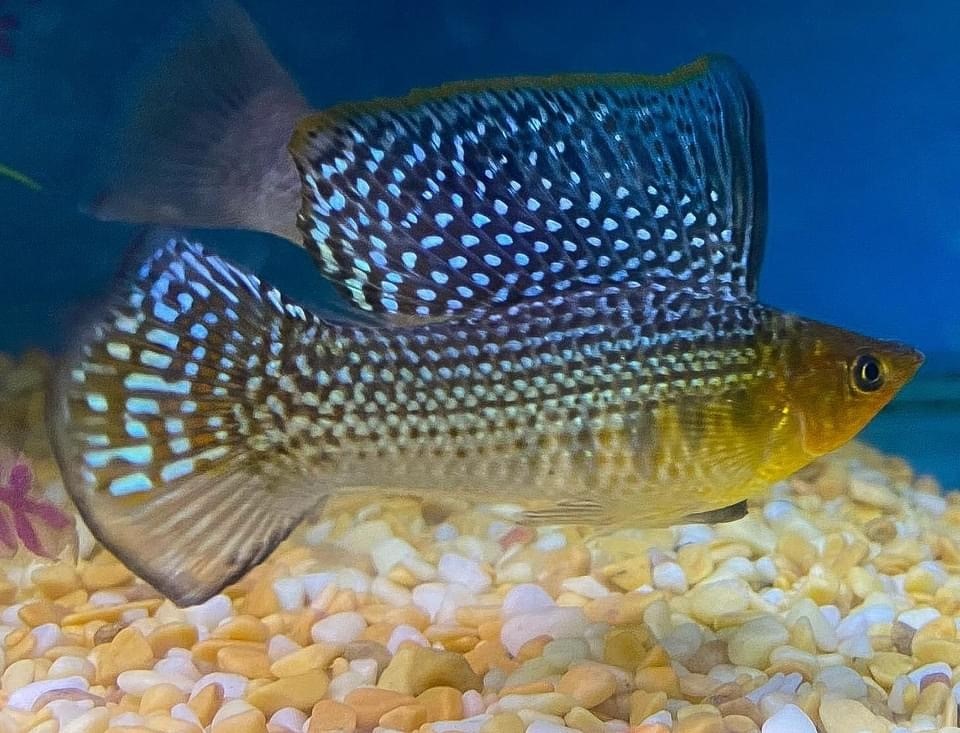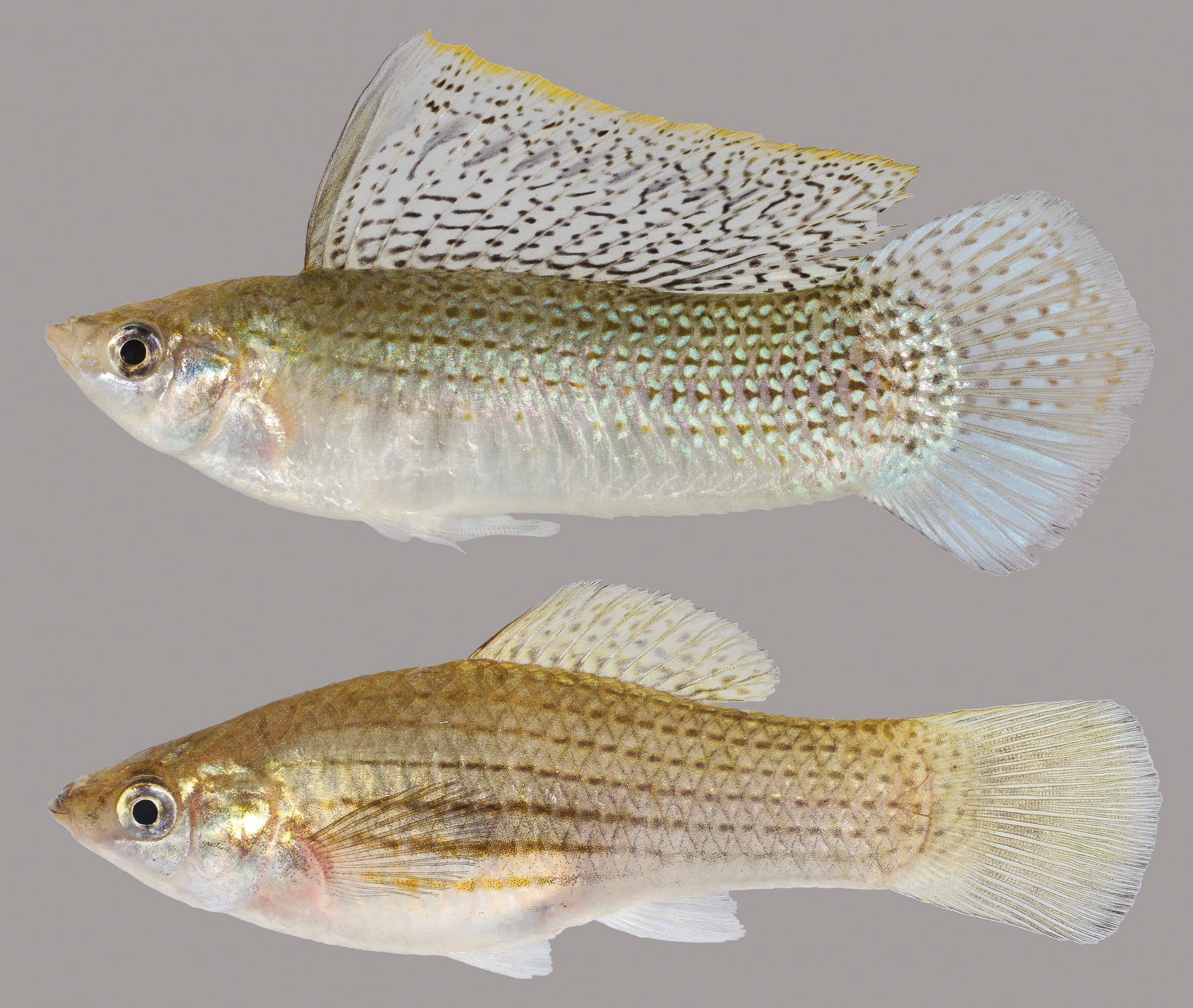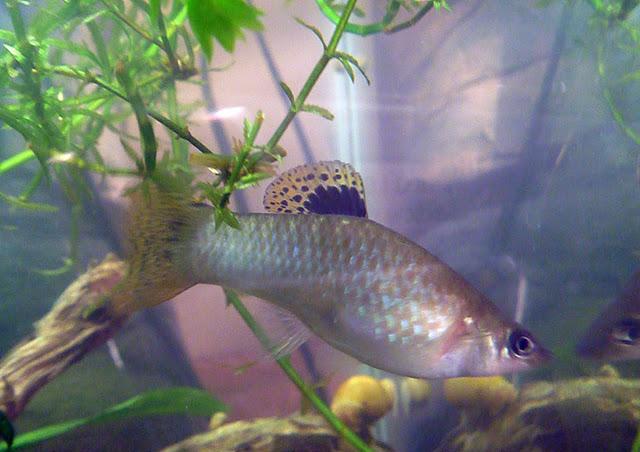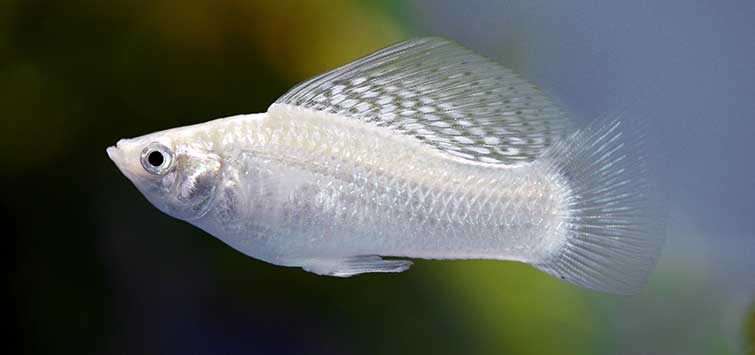Molly fish are a popular choice for aquariums due to their hardiness and peaceful nature. They come in many beautiful colors, sizes, and patterns that make them visually appealing. Additionally, they provide great entertainment as they interact with other fish and explore the tank environment.
If you’re interested in learning more about the different types of Molly fish, you’ve come to the right place. In this article, we will introduce you to 13 types of Molly fish with pictures. These types of Molly fish were found in various sources.
You are reading: 13 Types Of Molly Fish With Pictures

13 Types Of Molly Fish With Pictures
Sailfin Molly

The sailfin molly (Poecilia latipinna) is a popular species of Molly fish that is found in fresh, brackish, and coastal salt water in coastal lowland habitats from North Carolina to Texas and the Yucatan Peninsula of Mexico. They prefer marshes, lowland streams, swamps, and estuaries, and are very common in peninsular Florida.
Non-indigenous populations are established in the western U.S. and in Hawaii. The body of the sailfin molly is essentially oblong, with a small, upturned mouth and a broad caudal peduncle. The caudal fin is large, rounded, and sometimes tipped with black.
The dorsal fin is greatly enlarged in mature males and somewhat enlarged in females, which is a conspicuous and attractive feature that lends the species its prevailing common name.
Sailfin molly fish are visually stunning and come in a variety of colors, making them a popular choice for aquarium enthusiasts.
Costa Rican Molly

The Costa Rican Molly (Poecilia gillii) is a species of live-bearing freshwater fish that is native to the coastal regions of Central America, including Costa Rica and Panama. It has an elongated body shape with colors ranging from yellowish to dark brown and black stripes on its back.
Its fins are also quite striking – they have bright orange tips. The Costa Rican Molly is considered to be one of the hardiest species, tolerating a wide range of water conditions and temperatures.
This type of Molly fish is a popular choice for aquarium enthusiasts due to its hardiness and attractive appearance.
Short-Fin Molly
The short-fin molly, also known as the common molly (Poecilia sphenops), is a species of fish that inhabits fresh water streams and coastal brackish and marine waters from Mexico to Colombia.
The wild-type fishes are dull, silvery in color, but selective breeding over centuries has produced several color variations and different body shapes.
The short-fin molly is a popular choice for aquarium enthusiasts due to its hardiness and adaptability to a wide range of water conditions.
Read more : Learn About All Of The Major Deer Species
The short-fin molly can produce fertile hybrids with many Poecilia species, most importantly the sailfin molly. The wild form of the short-fin molly is quite rarely kept, as it has a rather plain silvery coloration suffused with brown and green.
Dwarf Molly
Dwarf Molly is a type of live-bearing freshwater aquarium fish that belongs to the Poeciliidae family. They are native to Central America and can be found in rivers, streams, lakes, ponds, and marshy areas.
Dwarf molly fish have an elongated body shape with a rounded head, pointed snout, and upturned mouth. Their average size is 2 inches in length, making them smaller than other types of Molly fish.
Dwarf molly fish are similar in appearance to shortfin molly fish, but they have a smaller size. These fish are popular among aquarium enthusiasts due to their hardiness and adaptability to a wide range of water conditions. They are also known for their peaceful temperament and attractive colors.
Dwarf molly fish prefer warm water temperatures between 74 – 82°F and thrive best when kept in an established tank with plenty of hiding places such as live plants or rocks.
Their diet consists mainly of omnivorous foods like flakes or pellets, but they will also benefit from occasional treats such as frozen brine shrimp or bloodworms.
Silver Sailfin Molly

The Silver Sailfin Molly (Poecilia latipinna) is a type of live-bearing freshwater fish that is native to the coastal regions of the Americas, from North Carolina to Texas and the Yucatan Peninsula of Mexico. Here are some key facts about the Silver Sailfin Molly:
Appearance:
– The Silver Sailfin Molly has a slender, elongated body shape with a pointed snout and upturned mouth.
– They have a silver or gray body color with a black dorsal fin and a large, sail-like dorsal fin in males.
– The females have a smaller dorsal fin and a rounded anal fin.
Habitat:
– Silver Sailfin Molly fish are found in fresh, brackish, and coastal saltwater habitats.
– They prefer marshes, lowland streams, swamps, and estuaries.
Diet:
– The diet of Silver Sailfin Molly fish includes algae and small invertebrates.
– In the aquarium, they will eat Mysis shrimp, flakes, and small pellets.
Tank Requirements:
– Silver Sailfin Molly fish require a spawning box in a 25-gallon or larger breeding tank.
– The aquarium should be planted as densely as possible or have plenty of hiding places.
– They prefer warm water temperatures between 72 – 82°F.
Silver Sailfin Molly fish are visually stunning and make a great addition to any aquarium. They are also known for their hardiness and adaptability to a wide range of water conditions.
Red Sunset Molly

The Red Sunset Molly (Poecilia sphenops) is a type of live-bearing freshwater fish that is popular among aquarium enthusiasts due to its striking coloration and peaceful temperament. Here are some key facts about the Red Sunset Molly:
Appearance:
– The Red Sunset Molly has a slender, elongated body shape with a pointed snout and upturned mouth.
– They have a bright red or orange body color with a black dorsal fin and a large, sail-like dorsal fin in males.
– The females have a smaller dorsal fin and a rounded anal fin.
Habitat:
– Red Sunset Molly fish are found in fresh and brackish water habitats.
– They prefer slow-moving water with plenty of vegetation.
Diet:
– The diet of Red Sunset Molly fish includes algae and small invertebrates.
– In the aquarium, they will eat Mysis shrimp, flakes, and small pellets.
Tank Requirements:
– Red Sunset Molly fish require a spawning box in a 25-gallon or larger breeding tank.
– The aquarium should be planted as densely as possible or have plenty of hiding places.
– They prefer warm water temperatures between 72 – 82°F.
Red Sunset Molly fish are visually stunning and make a great addition to any aquarium. They are also known for their hardiness and adaptability to a wide range of water conditions.
Black Lyretail Molly
The Black Lyretail Molly (Poecilia latipinna) is a type of live-bearing freshwater fish that is popular among aquarium enthusiasts due to its striking coloration and peaceful temperament. Here are some key facts about the Black Lyretail Molly:
Appearance:
– The Black Lyretail Molly has a slender, elongated body shape with a pointed snout and upturned mouth.
– They have a black body color with white highlights on their fins.
– Males have large dorsal fins, and the caudal fin is somewhat lyre-shaped.
Habitat:
– Black Lyretail Molly fish are found in fresh and brackish water habitats.
– They are native to Mexico and Guatemala but have also been introduced into parts of Florida.
Diet:
– The diet of Black Lyretail Molly fish includes algae and small invertebrates.
– In the aquarium, they will eat Mysis shrimp, flakes, and small pellets.
Tank Requirements:
– Black Lyretail Molly fish require a spawning box in a 25-gallon or larger breeding tank.
– The aquarium should be planted as densely as possible or have plenty of hiding places.
– They prefer warm water temperatures between 72 – 82°F.
Black Lyretail Molly fish are visually stunning and make a great addition to any aquarium. They are also known for their hardiness and adaptability to a wide range of water conditions.
Gold Panda Lyretail Molly
The Gold Panda Lyretail Molly is a type of live-bearing freshwater fish that is popular among aquarium enthusiasts due to its striking coloration and peaceful temperament. Here are some key facts about the Gold Panda Lyretail Molly:
Appearance:
– The Gold Panda Lyretail Molly has a slender, elongated body shape with a pointed snout and upturned mouth.
– They have a light gray body color with black spots and a golden-yellow tail.
– Males have large dorsal fins, and the caudal fin is somewhat lyre-shaped.
Habitat:
– Gold Panda Lyretail Molly fish are found in fresh and brackish water habitats.
– They are native to Central America.
Diet:
– The diet of Gold Panda Lyretail Molly fish includes algae and small invertebrates.
– In the aquarium, they will eat Mysis shrimp, flakes, and small pellets.
Tank Requirements:
– Gold Panda Lyretail Molly fish require a spawning box in a 25-gallon or larger breeding tank.
– The aquarium should be planted as densely as possible or have plenty of hiding places.
– They prefer warm water temperatures between 72 – 82°F.
Read more : 10 Types Of Animals With Antlers
Gold Panda Lyretail Molly fish are visually stunning and make a great addition to any aquarium. They are also known for their hardiness and adaptability to a wide range of water conditions.
Dalmatian Molly

The Dalmatian Molly (Poecilia latipinna) is a type of live-bearing freshwater fish that is popular among aquarium enthusiasts due to its striking coloration and peaceful temperament. Here are some key facts about the Dalmatian Molly:
Appearance:
– The Dalmatian Molly has a slender, elongated body shape with a pointed snout and upturned mouth.
– They have a black and white body color, resembling the spots of a Dalmatian dog.
– Males have large dorsal fins, and the caudal fin is somewhat lyre-shaped.
Habitat:
– Dalmatian Molly fish are found in fresh and brackish water habitats.
– They are native to Central America.
Diet:
– The diet of Dalmatian Molly fish includes algae and small invertebrates.
– In the aquarium, they will eat Mysis shrimp, flakes, and small pellets.
Tank Requirements:
– Dalmatian Molly fish require a spawning box in a 25-gallon or larger breeding tank.
– The aquarium should be planted as densely as possible or have plenty of hiding places.
– They prefer warm water temperatures between 72 – 82°F.
Dalmatian Molly fish are visually stunning and make a great addition to any aquarium. They are also known for their hardiness and adaptability to a wide range of water conditions.
Balloon Molly
The Balloon Molly (Poecilia latipinna) is a type of live-bearing freshwater fish that is popular among aquarium enthusiasts due to its unique appearance and peaceful temperament. Here are some key facts about the Balloon Molly:
Appearance:
– The Balloon Molly has a rounded, balloon-like body shape due to a genetic mutation.
– They have a variety of colors, including black, white, orange, and silver.
– Males have large dorsal fins, and the caudal fin is somewhat lyre-shaped.
Habitat:
– Balloon Molly fish are found in fresh and brackish water habitats.
– They are native to North and Central America.
Diet:
– The diet of Balloon Molly fish includes algae and small invertebrates.
– In the aquarium, they will eat Mysis shrimp, flakes, and small pellets.
Tank Requirements:
– Balloon Molly fish require a tank of at least 10 gallons.
– The aquarium should be planted as densely as possible or have plenty of hiding places.
– They prefer warm water temperatures between 72 – 78°F.
Balloon Molly fish are visually stunning and make a great addition to any aquarium. They are also known for their hardiness and adaptability to a wide range of water conditions.
Common Black Molly
The Common Black Molly (Poecilia sphenops) is a type of live-bearing freshwater fish that is popular among aquarium enthusiasts due to its striking coloration and peaceful temperament. Here are some key facts about the Common Black Molly:
Appearance:
– The Common Black Molly has a slender, elongated body shape with a pointed snout and upturned mouth.
– They are black all over, making them a melanistic breed.
– Males have large dorsal fins, and the caudal fin is somewhat lyre-shaped.
Habitat:
– Common Black Molly fish are found in fresh and brackish water habitats.
– They are native to Central America, Mexico, and Colombia.
Diet:
– The diet of Common Black Molly fish includes algae and small invertebrates.
– In the aquarium, they will eat Mysis shrimp, flakes, and small pellets.
Tank Requirements:
– Common Black Molly fish require a spawning box in a 25-gallon or larger breeding tank.
– The aquarium should be planted as densely as possible or have plenty of hiding places.
– They prefer warm water temperatures between 72 – 82°F.
Common Black Molly fish are visually stunning and make a great addition to any aquarium. They are also known for their hardiness and adaptability to a wide range of water conditions.
Platinum Lyretail Molly
The Platinum Lyretail Molly (Poecilia velifera) is a type of live-bearing freshwater fish that is popular among aquarium enthusiasts due to its striking coloration and peaceful temperament. Here are some key facts about the Platinum Lyretail Molly:
Appearance:
– The Platinum Lyretail Molly has a slender, elongated body shape with a pointed snout and upturned mouth.
– They are platinum or silver in color, with a long tailfin with long edges.
– Males have large dorsal fins, and the caudal fin is somewhat lyre-shaped.
Habitat:
– Platinum Lyretail Molly fish are found in fresh and brackish water habitats.
– They are native to Central America.
Diet:
– The diet of Platinum Lyretail Molly fish includes algae and small invertebrates.
– In the aquarium, they will eat Mysis shrimp, flakes, and small pellets.
Tank Requirements:
– Platinum Lyretail Molly fish require a spawning box in a 25-gallon or larger breeding tank.
– The aquarium should be planted as densely as possible or have plenty of hiding places.
– They prefer warm water temperatures between 72 – 82°F.
Platinum Lyretail Molly fish are visually stunning and make a great addition to any aquarium. They are also known for their hardiness and adaptability to a wide range of water conditions.
Gold Dust Molly
The Gold Dust Molly (Poecilia sphenops) is a type of live-bearing freshwater fish that is popular among aquarium enthusiasts due to its unique and captivating appearance. Here are some key facts about the Gold Dust Molly:
Appearance:
– The Gold Dust Molly has a slender, elongated body shape with a pointed snout and upturned mouth.
– They have a silver or gray body color with a gold dust-like pattern on their scales.
– Males have large dorsal fins, and the caudal fin is somewhat lyre-shaped.
Habitat:
– Gold Dust Molly fish are found in fresh and brackish water habitats.
– They are native to Central America.
Diet:
– The diet of Gold Dust Molly fish includes algae and small invertebrates.
– In the aquarium, they will eat Mysis shrimp, flakes, and small pellets.
Tank Requirements:
– Gold Dust Molly fish require a spawning box in a 25-gallon or larger breeding tank.
– The aquarium should be planted as densely as possible or have plenty of hiding places.
– They prefer warm water temperatures between 72 – 82°F.
Gold Dust Molly fish are visually stunning and make a great addition to any aquarium. They are also known for their hardiness and adaptability to a wide range of water conditions.
FAQS
1. What is a Molly fish?
A Molly fish is a freshwater aquarium fish from the Poeciliidae family. They are popular for their attractive colors and hardiness.
2. What are the different types of Molly fish?
There are many different types of Molly fish, including the Sailfin Molly, Costa Rican Molly, Short-Fin Molly, Dwarf Molly, Silver Sailfin Molly, Red Sunset Molly, Black Lyretail Molly, Gold Panda Lyretail Molly, Dalmatian Molly, Balloon Molly, Common Black Molly, Platinum Lyretail Molly, and Gold Dust Molly.
3. What are some common characteristics of Molly fish?
Most species of Molly fish have chunky, thick-set bodies; rounded fins; tall, angular dorsal fins; and pointed heads and mouths. They are also known for their peaceful temperament and hardiness.
4. What are some tips for caring for Molly fish?
Molly fish are easy to care for since they require minimal maintenance and can tolerate a wide range of water conditions. They prefer warm water temperatures between 72 – 82°F and thrive best when kept in an established tank with plenty of hiding places such as live plants or rocks. Their diet consists mainly of omnivorous foods like flakes or pellets, but they will also benefit from occasional treats such as frozen brine shrimp or bloodworms.
Source: https://petstutorial.com
Category: Animals










